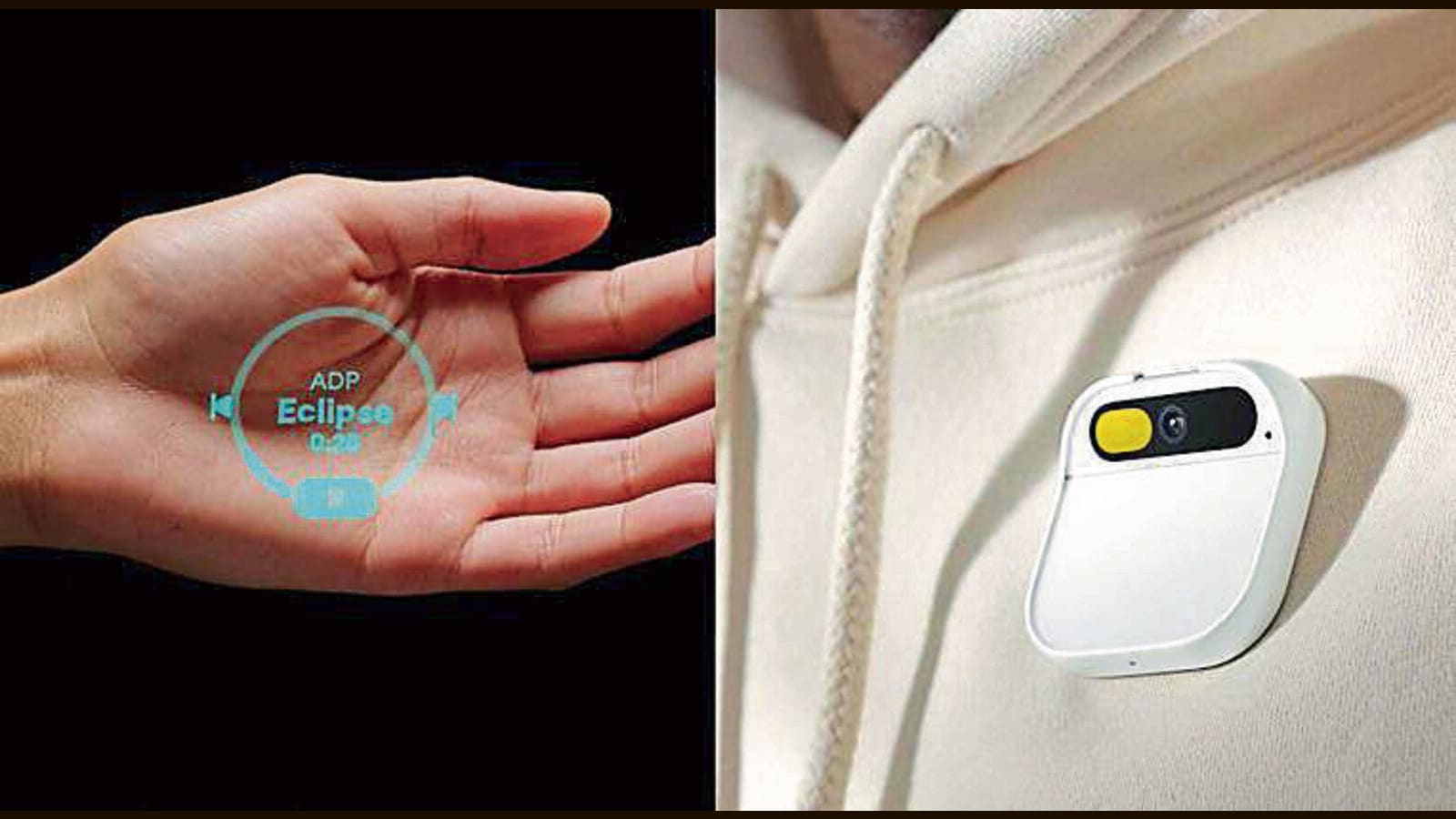
[ad_1]
There’s a sense of suspense around smartphones today. What’s coming next?

Well, the new phone for the age of artificial intelligence will likely be a wearable, AI-led device that looks nothing like what we have grown accustomed to.
Voice will likely replace touch (to a far greater degree than it already has).
Take the US-based start-up Rabbit’s R1. This is a palm-sized personal assistant device released this year in a vivid, luminous orange. “Our mission is to create the simplest computer, something so intuitive that you don’t need to learn how to use it,” Rabbit co-founder and CEO Jesse Lyu said, while introducing the wearable.
The Rabbit R1 is a square device 3 inches wide, weighing 115 gm. It can dangle on a keychain or sit in a pocket, as it is issued spoken instructions. Hardware includes a microphone, camera, scroll wheel and e-SIM card slot.

At $199 (about ₹16,500), it pairs with apps on one’s phone to engage apps on the latter. In this way, it can play music, book a taxi, place and track deliveries, conduct web searches, take notes.
Powered by MediaTek’s Helio P35, a hardy and capable chip currently in use across some mid-range Android phones, what remains to be seen is how well the software on the Rabbit, and indeed its digital assistant, are optimised for accuracy and speed.
The other AI-driven companion device making waves is, of course, Humane’s AI Pin. This device, unveiled at the Paris Fashion Week in September, is considerably more expensive, costing about $699 ( ₹58,000). Aluminium and light-weight, at just 34.2 gm, it is powered by a high-speed Qualcomm Snapdragon chip.
The AI Pin looks like something out of Star Trek, and works a bit like something out of Star Trek too. Once again, one doesn’t tap or swipe, one talks to the Pin, treating it as a mediator between oneself and one’s phone. This device can also project visuals onto the palm of an outstretched hand, allowing one to read messages, use navigation apps and conduct online searches more easily.
How feasible is it, to have two devices in place of one? It is still unclear, admittedly, whether the wearable assistant will be a passing phase and a brief interim step, in the larger evolution of the smartphone. A lot will depend on how the role of the intelligent assistant unfolds. Can it effectively take on menial tasks, be trusted to “Book a cab to take me home, but avoid surge pricing” or “Order the salad dressing we usually get… not the one we tried last time”. Consistency of experience will be key.
Meanwhile, for something in-between an AI assistant and a wearable, there’s Samsung’s bowling ball-sized robot, Ballie, unveiled this year. It can follow its owner around at home, double as a smart home controller, be a very chatty chatbot, and allow one to check on pets or elders while one is at work or on a trip, via its built-in camera features. Ballie can also serve as a projector, streaming content onto a wall.

The aim with all these is a life without a smartphone at one’s side. Between wearable digital assistants, robot aides and immersive headsets, the ability to maintain distance from device could become a symbol of opulence and luxury.
Of course, AI has a long way to go before this dream can be realised. Humane, at its launch, for instance found that the AI Pin provided incorrect information about the next solar eclipse and about how much protein there is in almonds. The company has promised that such issues with its training data will be fixed by the time the first Pins are shipped out later this year.
How safe is it to link such a device to one’s phone, or trust it with one’s conversation and communication? As with all evolutions in technology, the vulnerabilities of the next-generation wearables are not yet known.
[ad_2]
Source link








